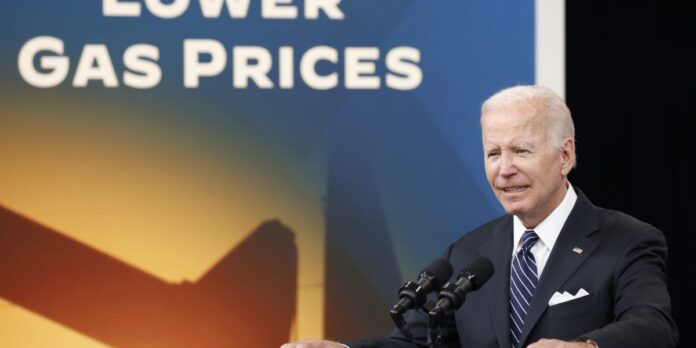
Being a petroleum analyst in an election year is frustrating. At least, that was the impression GasBuddy’s head of petroleum analysis, Patrick De Haan, gave in an interview with Fortune.
For a man like De Haan, who spends his time tracking refinery utilization rates, oil inventory levels, and weather conditions to better understand the intricacies of the complex, global oil and gasoline market, the uninformed opinions of politicians and the masses during election season can be draining.
De Haan said that this election year people are “voting with their wallets much more than ever before,” but the information they’re getting about what drives prices at the gas pump is subpar at best.
“There’s so much misinformation from politicians on gas prices on both sides of the aisle that Americans really think gas prices are more a function of a president than they do economics,” he explained.
President Joe Biden was widely blamed for the spike in gasoline prices to their record high of just over $5 per gallon in June 2022. But the reality is, one president’s actions don’t have that much of an impact on the global oil market, which ultimately drives domestic gasoline prices. The war in Ukraine and subsequent sanctions from numerous western nations were the major drivers of rising oil prices in 2022, and gasoline prices were pushed even higher due to the loss of refining capacity during the COVID-era lockdowns.
By that same token, this means that Biden can’t really take credit for the retreat in gas prices from their record highs. His release of 230 million barrels of oil from the strategic petroleum reserve in late 2021 and early 2022 certainly helped lower gasoline prices, but even when combined with all of the other petroleum reserve releases from western nations, it only lowered gasoline prices by 40 cents, according to estimates from the Department of Energy.
The reality is the Biden administration has benefited from an oil production boom in the U.S. that’s helped cool gasoline prices. Crude oil production hit a record average of 12.9 million barrels per day in 2023—but it’s hard to give Biden too much credit for that boom, considering he promised to “end fossil fuel” on the campaign trail in 2019.
Biden’s policies while president certainly didn’t hurt or quash oil production, however. After all, he moved forward with plans to allow oil drilling on federal lands, auctioned over 73 million acres in the Gulf of Mexico to oil drillers, and approved multiple oil and gas projects—much to the chagrin of green activists.
Still, for De Haan, this discussion always comes back to his point about oil and gasoline prices being driven by economics, not politicians. “I just remind folks that, at the end of the day, one president in one country in a world with 200-some countries is rather powerless to control the price of a global commodity, or the global balance of economics that drives the price of that commodity,” he told Fortune.
Now, with the national average price for a gallon of regular gasoline jumping nearly 8% this month to $3.54, De Haan has been fielding a lot of questions about who or what is to blame for the spike—and there are a few key culprits.
First, WTI crude oil prices have surged from their Dec. 12 low of $68.61 to over $82 this week amid a supply-demand imbalance.
The ongoing Red Sea crisis, 2.2 million barrels per day of crude production cuts from OPEC+, the International Energy Agency’s recent upgrade to its global crude demand growth outlook, and Ukrainian drone attacks on Russian oil refineries, which have shut down 1% of global crude refining capacity, are all playing a role in driving oil prices higher.
The U.S. is also going through its annual, and somewhat costly, “fuel switching” process where refiners change from winter-grade to summer-grade fuel, which has added to gas prices’ rise. Overall, De Haan described gas prices as “slightly elevated,” and noted that the impact of the Ukraine war and refinery capacity losses that were “locked in” during the COVID era are still playing a big role in driving price action. But the situation today is still far better than it was in 2022.
“Over time, the volatility, the bumps in the road, are continuing to get smoothed out,” De Haan added. “We continue to see things kind of getting closer to back to normal.”
The petroleum analyst argued that many Americans need perspective when it comes to gas prices. With the national average price for a gallon of regular gasoline currently around $3.54, prices, when compared to incomes, prices are actually “close to historic norms.”
“People always have this expectation that gas is going to be $1, $2. Right? It’s not cheap until it’s $1 or $2,” De Haan said. “But historically speaking, comparing the amount of work that Americans need to do to be able to buy one gallon of gasoline…while the price may feel high, Americans are actually doing a little bit less labor than they were a couple of years ago to buy a gallon of gasoline.”


